Disneyland architecture is more than fantasy brought to life; it’s a masterclass in immersive design, placemaking, and cultural storytelling. Each Disneyland theme park around the world, from California to Shanghai, uses architecture to create vivid, narrative-rich environments that transport visitors into entirely new worlds.
As of 2025, the Disney brand includes 12 uniquely designed theme parks across six resorts in North America, Europe, and Asia. These parks serve as case studies in placemaking and experiential architecture, where every facade, pathway, and structure is designed with purpose. Whether it’s the biophilic wonder of Animal Kingdom, the nautical romanticism of Tokyo DisneySea, or the cultural fusion in Shanghai Disneyland, the architectural language of each site plays a vital role in world-building and emotional resonance.
This article explores how Disney’s theme parks have evolved into architectural marvels, where fantasy meets form, and entertainment meets engineering. Through landmark attractions, innovative use of materials, and site-responsive design, we delve into the design DNA that makes each Disney park not just a destination but an unforgettable spatial experience.
1. Disneyland Resort (Anaheim, California)
Disneyland Park
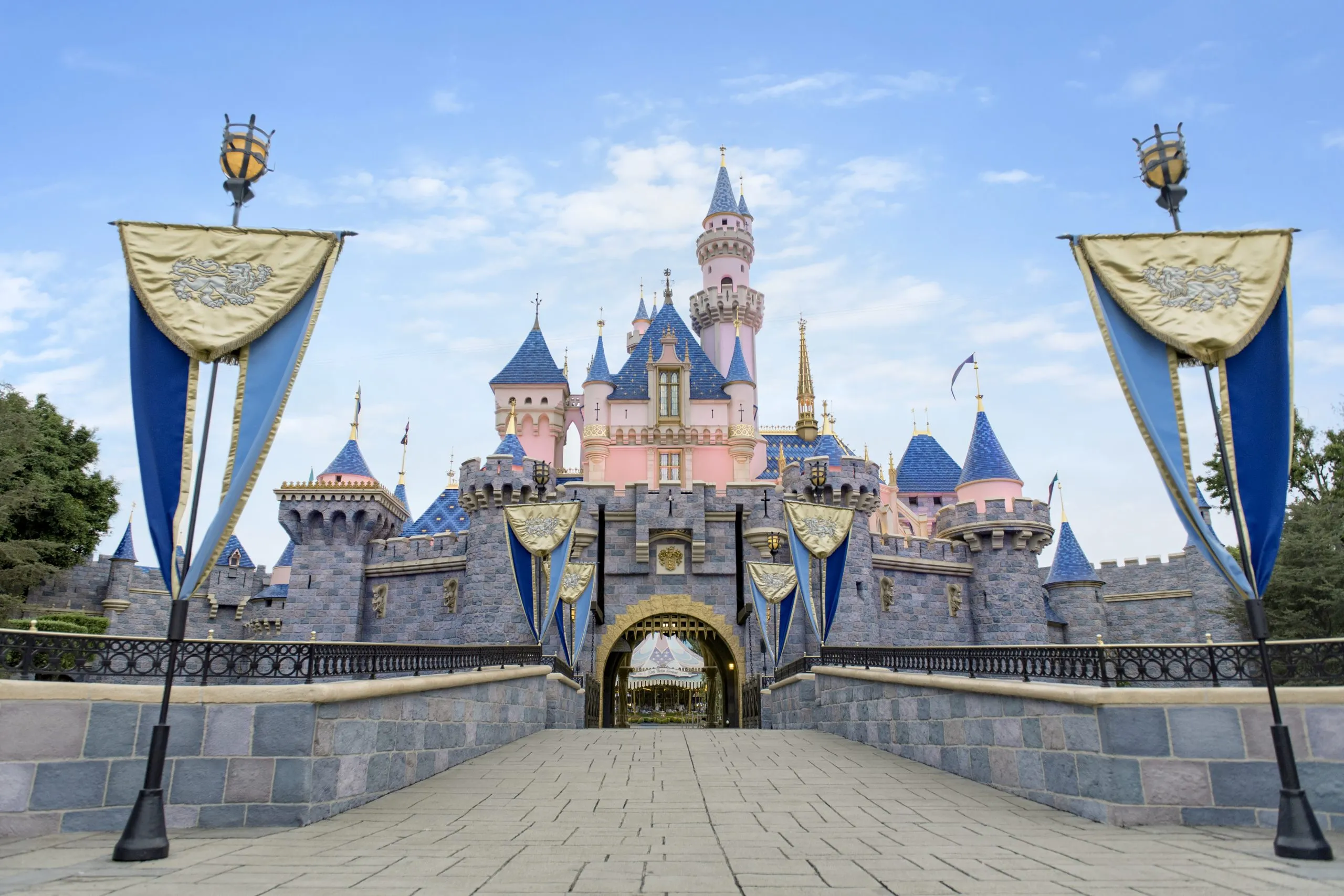
Walt Disney’s first creation opened in 1955 and set the standard for immersive and story-driven Disneyland architecture. Its centerpiece, Sleeping Beauty Castle, became an architectural landmark that influenced all future parks. Because of its history, every themed area from the jungle adventures of Adventureland to the futuristic thrills of Space Mountain feels like a fully built world. Its large-scale locations, like the Caribbean port in Pirates of the Caribbean, enhance the cinematic storytelling.
Star Wars: Galaxy’s Edge was a significant expansion of the project, introducing Batuu, a hyper-detailed alien colony. Due to high demand, it launched in two phases beginning in May 2019. The first phase included Millennium Falcon: Smugglers Run, immersive dining, and full-scale starships. The second phase, Rise of the Resistance, elevated architectural storytelling by engaging guests in an intergalactic battle.
Disney California Adventure Park
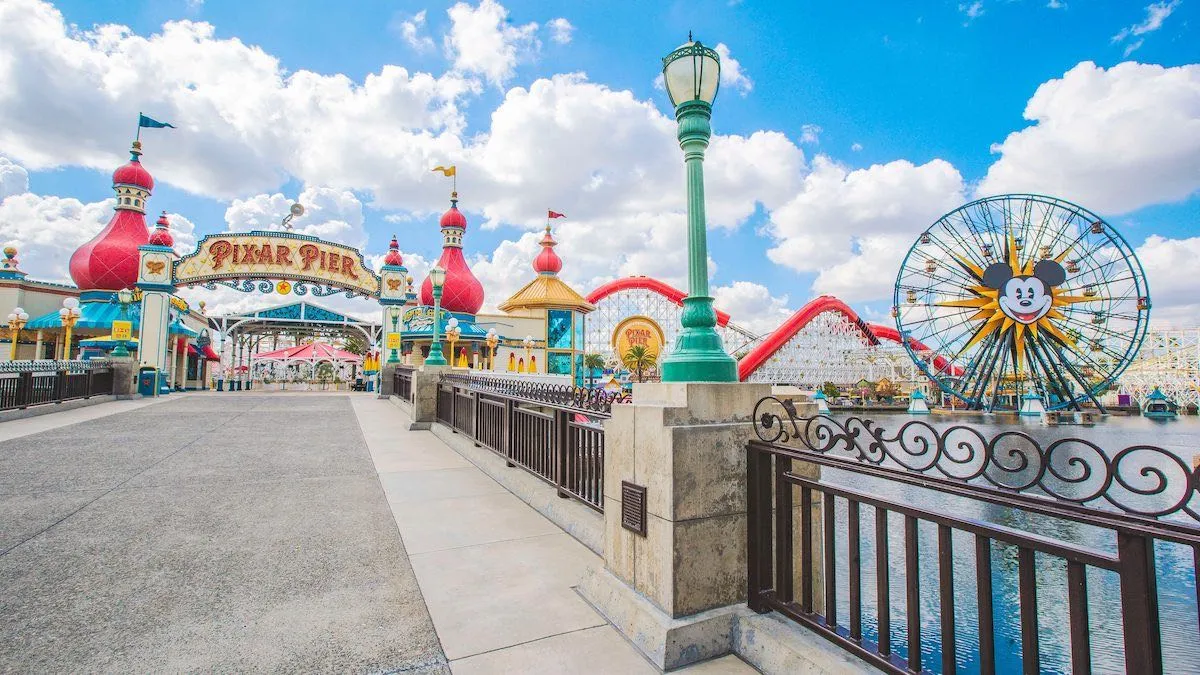
Located next door, Disney California Adventure complements Disneyland Park by pulling inspiration from Pixar, Marvel, and California’s diverse cultural context. This park opened in 2001 and focuses on large-scale storytelling with Guardians of the Galaxy – Mission: BREAKOUT! Towers over Avengers Campus. The Avengers Campus opened in 2020, bringing interconnected superhero stories together in a purpose-built setting.
It even features The Incredicoaster, the world’s longest steel roller coaster stretching across Pixar Pier. Because of its emphasis on placemaking, there are exclusive zones such as Cars Land to recreate Route 66 with architecture influenced by the American Southwest. The facilities, such as the Worldwide Engineering Brigade (WEB), include futuristic designs representing Marvel’s global brand, connecting architectural narrative throughout Disney parks around the world.
2. Walt Disney World Resort (Orlando, Florida)
Magic Kingdom Park
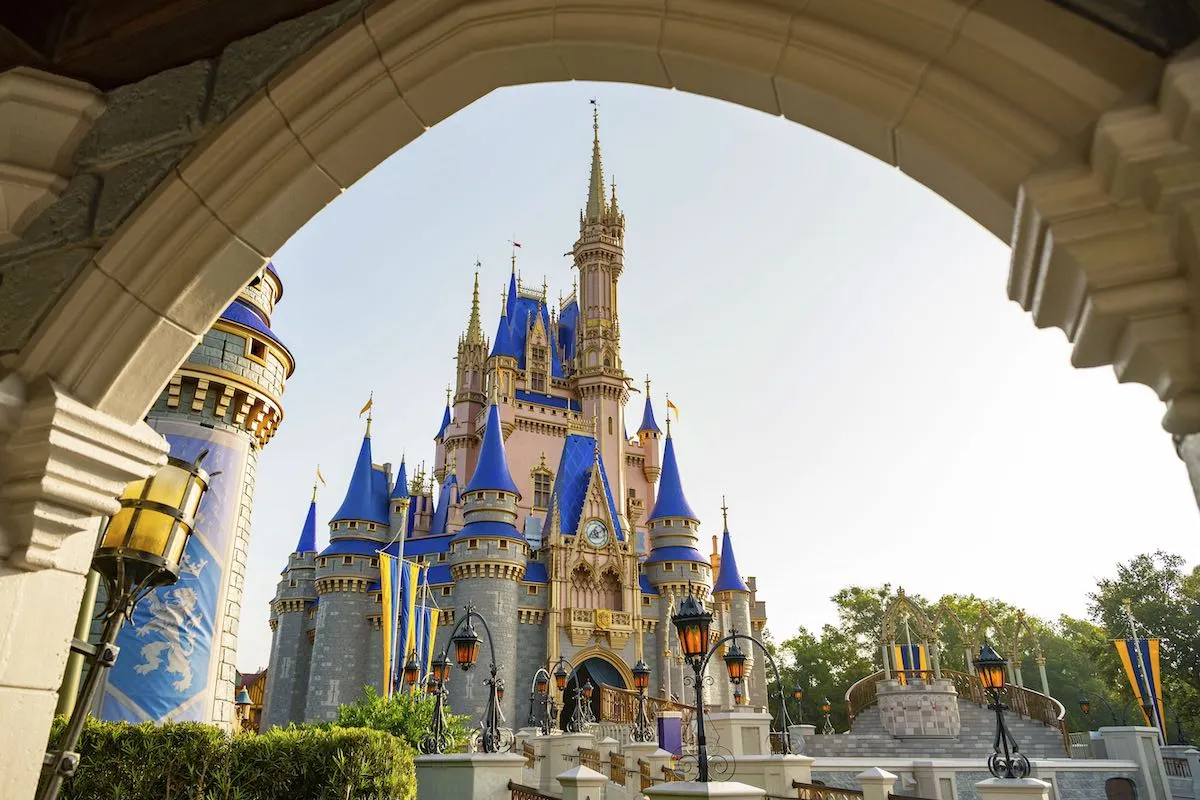
Magic Kingdom opened in 1971, amped up the scale and grandeur of Disneyland’s layout. Cinderella Castle central to the park connects Main Street, U.S.A., and Tomorrowland. This layout leads guests from old turn-of-the-century elegance to future visions. Attractions such as TRON Lightcycle / Run, It’s a Small World, and Space Mountain turn interior spaces into richly immersive worlds, demonstrating that design and storytelling complement one another.
EPCOT
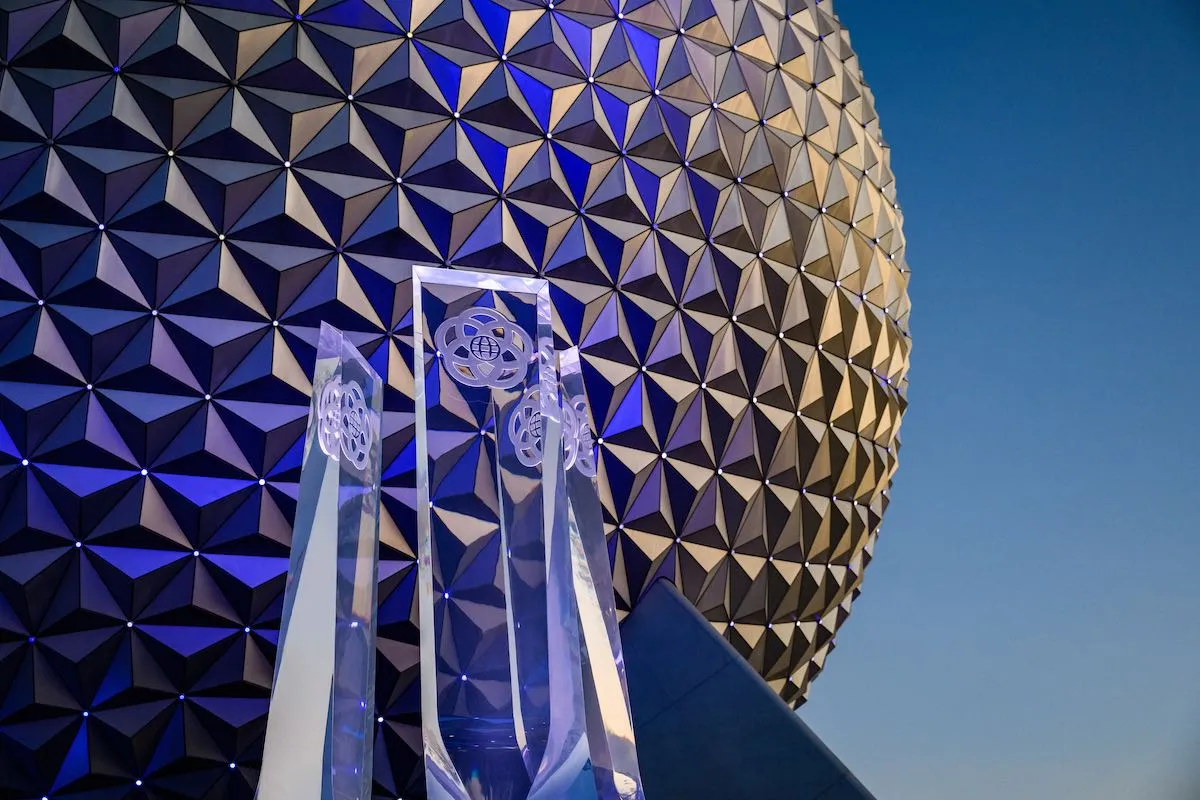
EPCOT, opened in 1982, integrates innovation and global culture across four zones, which are World Celebration, World Discovery, World Nature, and World Showcase, each with its own architectural expression. Like World Showcase, Epcot immerses guests in 11 culturally unique pavilions.
Recent attractions like Guardians of the Galaxy: Cosmic Rewind and Journey of Water highlight a combination of environmental awareness with Moana-inspired interactive design. The park’s geodesic sphere is Spaceship Earth, which is a ride that represents EPCOT’s forward-thinking architecture. Its futuristic concepts echo parametric design principles. If you’re curious to learn how such forms come to life, explore the PAACADEMY Grasshopper 3D courses, which teaches the foundations of algorithmic design.
Disney’s Animal Kingdom Theme Park
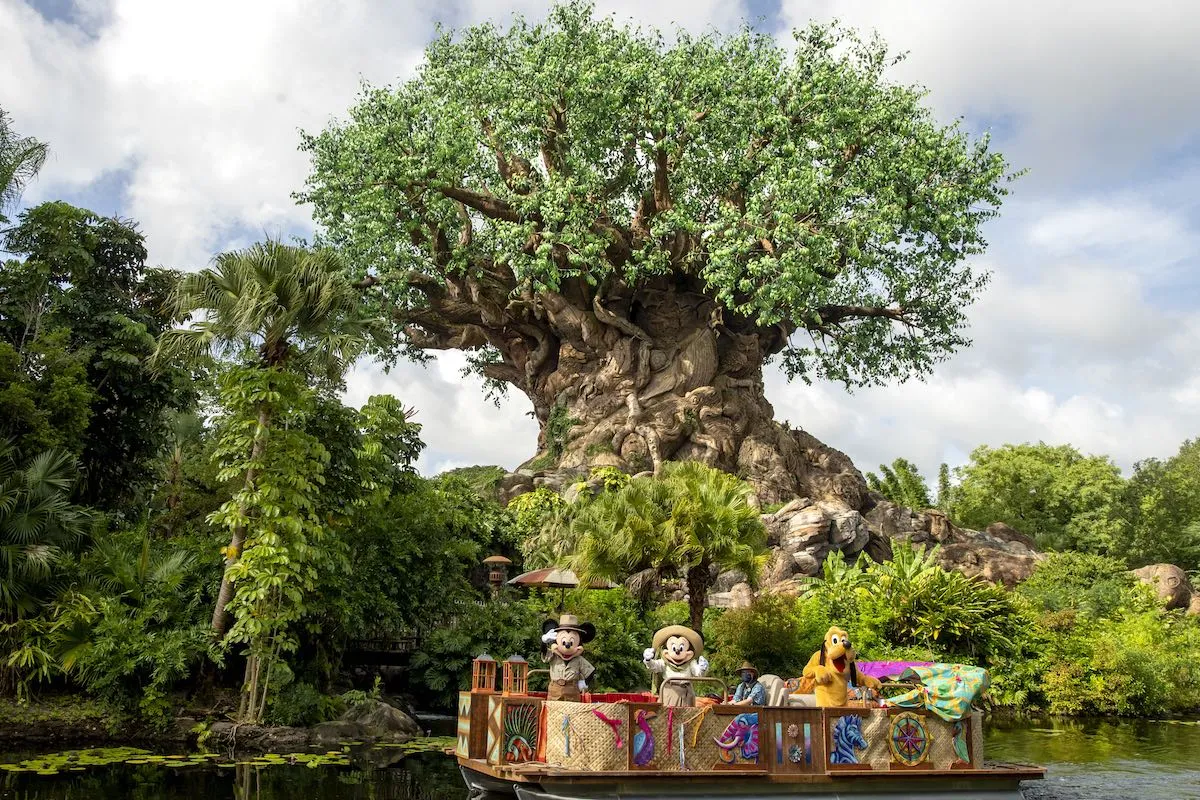
Opened in 1998, located on the western edge of Walt Disney World, Disney’s Animal Kingdom Theme Park fuses design and nature. Its centerpiece, The Tree of Life, stands 145 feet tall and features over 300 animal carvings offering visual and mystical anchors.
The park focuses on natural storytelling, showcasing biophilic architecture through attractions like the butterfly garden and Pandora – The World of Avatar. These cinematic details and world-class rides, such as Avatar Flight of Passage, create immersive, living, and breathing spaces.
Disney’s Hollywood Studios

Opened in 1989, Disney’s Hollywood Studios recreates the golden period of Hollywood with themed architecture that resembles retro facades and story-driven surroundings. It features classic innovative zones such as Star Wars: Galaxy’s Edge, Toy Story Land, and Mickey & Minnie’s Runaway Railway. Attractions like The Twilight Zone Tower of Terror blend hotel architecture with imagination.
The relatively new Star Wars: Galactic Starcruiser pushes immersion even further as passengers board the Halcyon spaceship for a three-day narrative experience. In this, every corridor and room replicates space travel, complete with screen-based windows and a launch pod departure.
3. Tokyo Disney Resort (Chiba, Japan)
Tokyo Disneyland
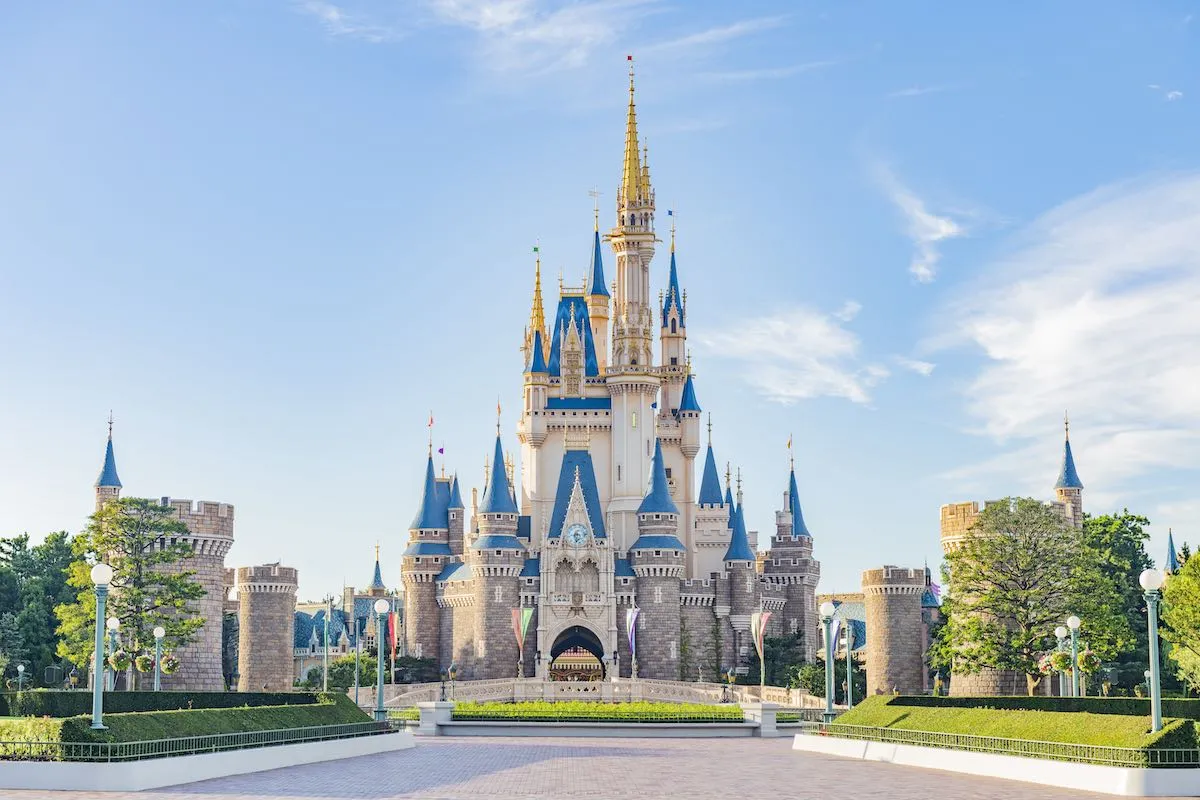
Tokyo Disneyland opened in 1983 and follows the classic Disney style while incorporating exclusively Japanese features. It features themed areas such as World Bazaar, Adventureland, Westernland, Critter Country, Fantasyland, Toontown, and Tomorrowland, which revolve around its Cinderella Castle.
The architects draw inspiration from European designs, combining fantasy with structural durability to create something iconic and long-lasting. Attractions like Pooh’s Hunny Hunt and Monsters Inc. Ride & Go Seek bring technological innovation to the Magic Kingdom’s traditional structure. While Adventureland combines various architectural elements to promote cultural exploration, Tomorrowland contrasts with sleek and futuristic structures made of cutting-edge materials.
Tokyo DisneySea
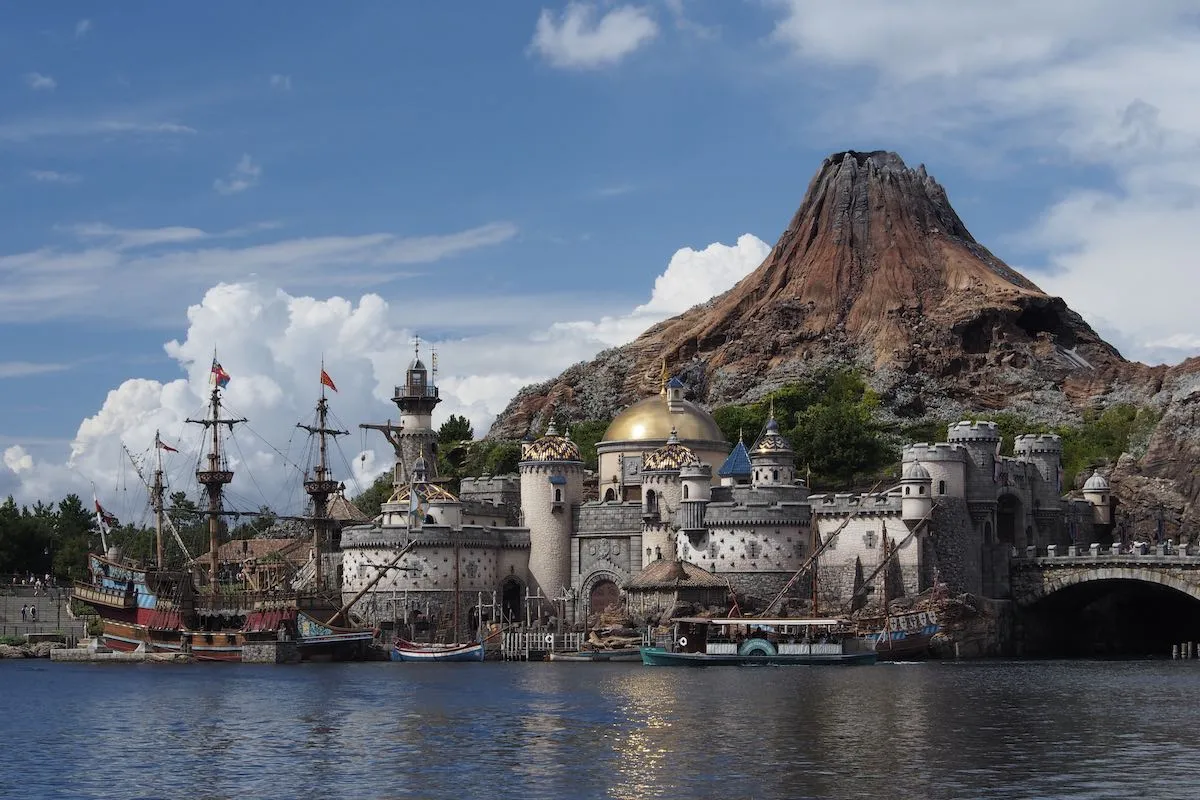
DisneySea, which opened in 2001 and is located near Tokyo Disneyland, stands out for its nautical theme and architectural grandeur. Divided into seven themed “ports,” it creates immersive worlds through elaborate design. Mediterranean Harbor resembles an Italian port with gondolas, canals, and Venice-style buildings. Mermaid Lagoon features whimsical architecture to evoke The Little Mermaid’s underwater world.
Because architecture promotes storytelling, rides like “Journey to the Center of the Earth” and “Sindbad’s Storybook Voyage” add to the cinematic feel. This flow supports urban design and sustainability principles throughout the resort, featuring pedestrian-friendly layouts and clearly zoned regions that guide tourists through fantasy, adventure, and futurism with an ecological consciousness.
4. Disneyland Paris (Marne-la-Vallée, France)
Disneyland Park

Disneyland Paris opened in 1992 as Euro Disney, combining European elegance with timeless Disney tales. At its center is Sleeping Beauty Castle, featuring Gothic and Renaissance elements that evoke the French landscape. The castle itself offers an immersive experience with cobbled pathways, vintage lampposts, and Victorian charm, providing nostalgic beauty to Main Street, U.S.A., which shows early 20th-century America.
It’s Tomorrowland, also known as Discoveryland, embraces retro-futurism with metallic tones and geometric lines. The themed zones, such as Fantasyland, Adventureland, and Frontierland, all have distinct architectural styles, ensuring the park’s beauty and visual consistency.
Walt Disney Studios Park

Opened in 2002, this park delves into the world of cinema through attractions such as Avengers Campus and Worlds of Pixar. In Walt Disney Studios Park, architectural immersion is prominently featured in Ratatouille: The Adventure, where guests experience Gusteau’s kitchen on a rodent scale through 4D effects and innovative design.
Its emphasis on layout and accessibility brings themed areas that mirror the behind-the-scenes magic of movie-making. For example, the Avengers Campus area combines futuristic elements with an action-oriented design to promote interactive experiences.
5. Hong Kong Disneyland Resort (Lantau Island, Hong Kong)
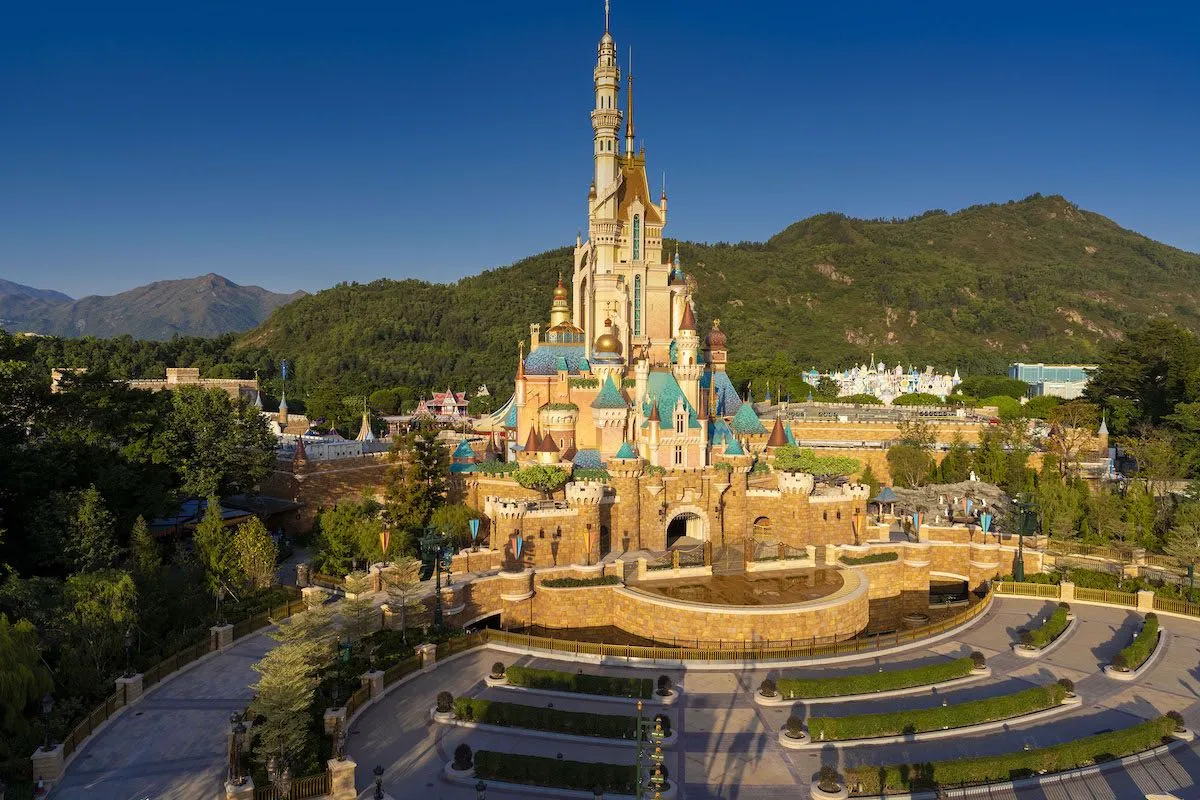
Hong Kong Disneyland opened in 2005, located on the South China Sea island of Lantau. It is the smallest of the Disney parks, incorporating classic Disney themes with Hong Kong’s indigenous culture.
The park’s design incorporates feng shui principles that influence layout and orientation to promote luck and good fortune. It features various themed zones, such as Grizzly Gulch, inspired by Frontierland, and Tomorrowland, which reflects futuristic ideas. The main attraction is Mystic Manor, which takes visitors on an extraordinary adventure.
The recent architectural highlights and attractions include the Castle of Magical Dreams, which showcases Disney princesses from all around the world. Nevertheless, the World of Frozen offers immersive environments that perfectly replicate Arendelle in architecture and design.
6. Shanghai Disney Resort (Shanghai, China)
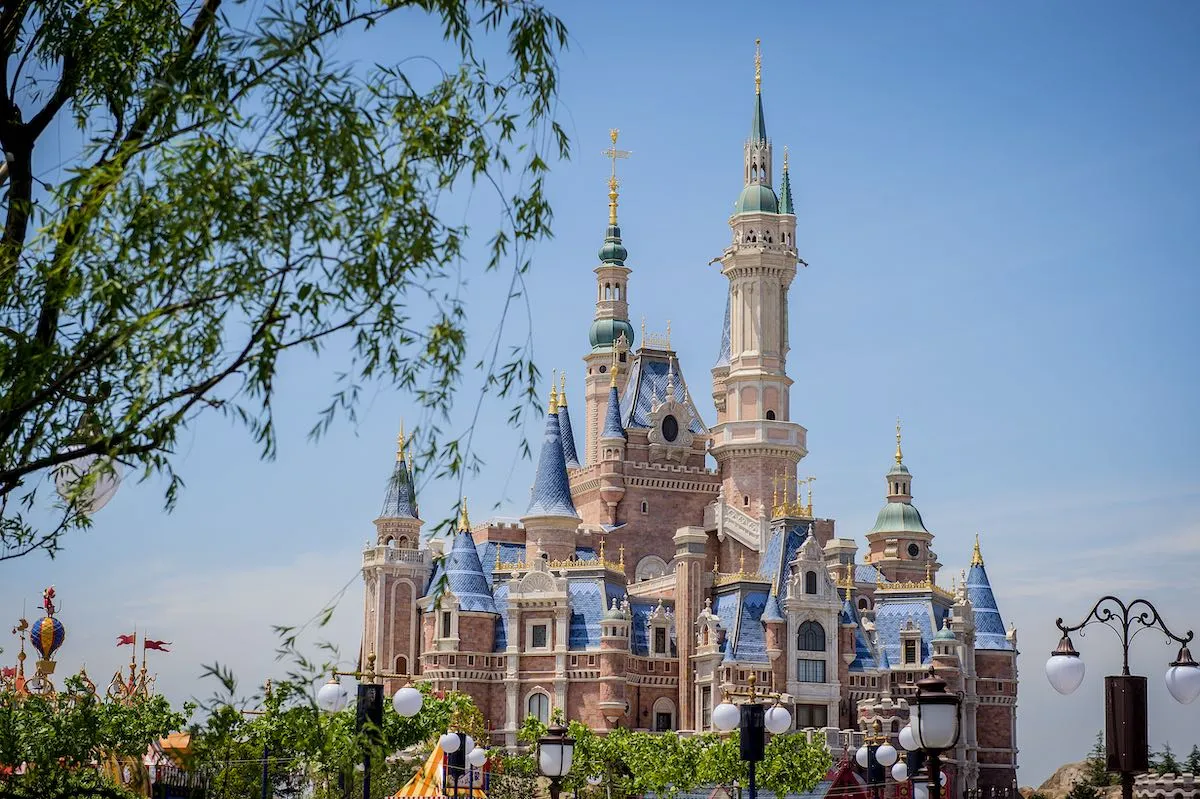
Shanghai Disneyland opened in 2016 in Pudong and shows Disney’s cultural fusion and imaginative style from the entrance, where modern architecture meets traditional Chinese patterns. The Enchanted Storybook Castle shows Disney’s largest castle, which combines Western fairytale themes with Chinese imperial traits like gilded roofing and carved decorations.
Its main attractions include Tomorrowland’s TRON Lightcycle Power Run, which stands beneath a sweeping ETFE canopy with a ribbon-like structure and lighting reflecting the ride curves. Adventure Isle and the Gardens of Imagination continue this story-and-space fusion with rivers and Chinese gardens merging with built pathways.
The Lasting Legacy of Disneyland Architecture Around the World
Disney has evolved into a global showcase of Disneyland architecture, featuring 12 world-class theme parks across six breathtaking destinations, offering captivating experiences that have defined the brand for decades. This is the happiest place on Earth, combining the magic of Disney classics with stunning architecture. From the fairy-tale themes of Disneyland Paris to the futuristic thrills of Tokyo Disney Resort, each park offers unique adventures for visitors of all ages.




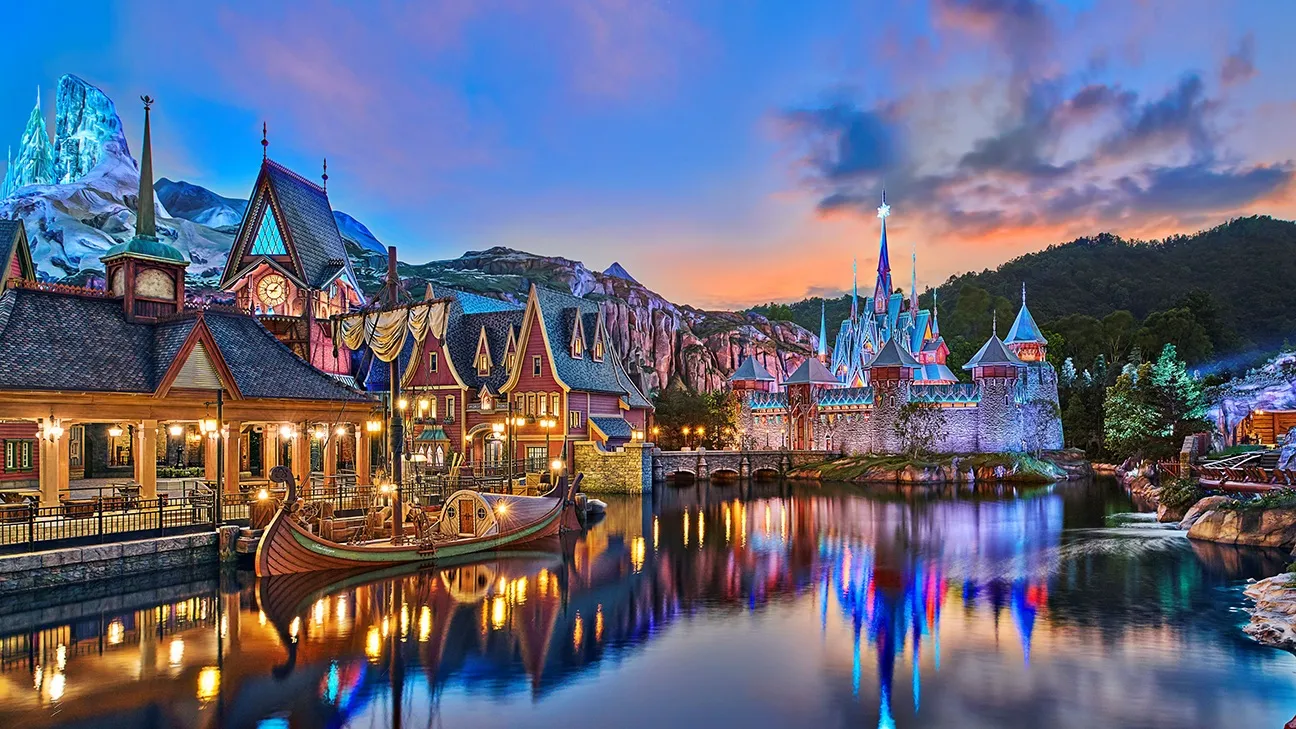













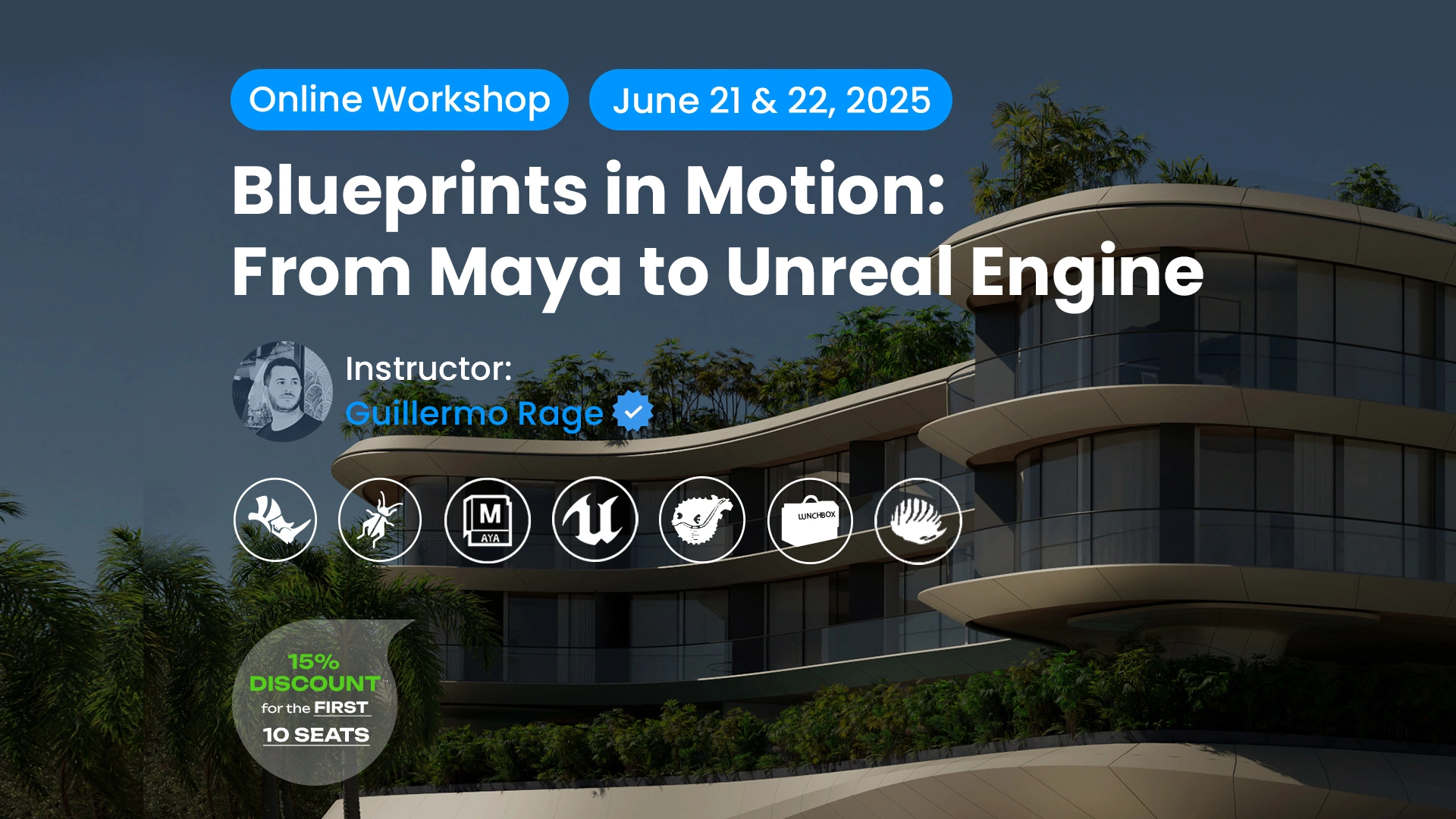
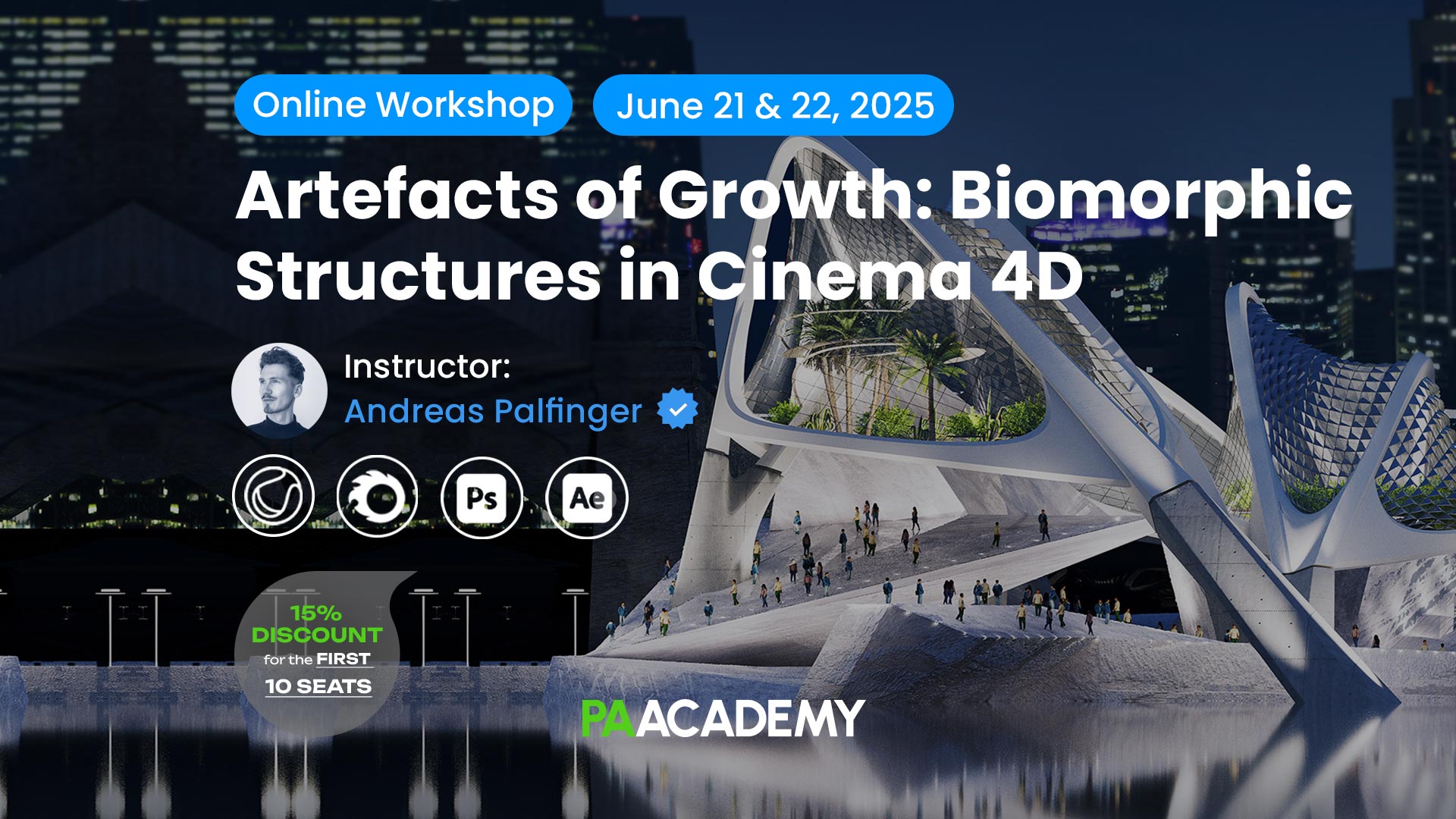


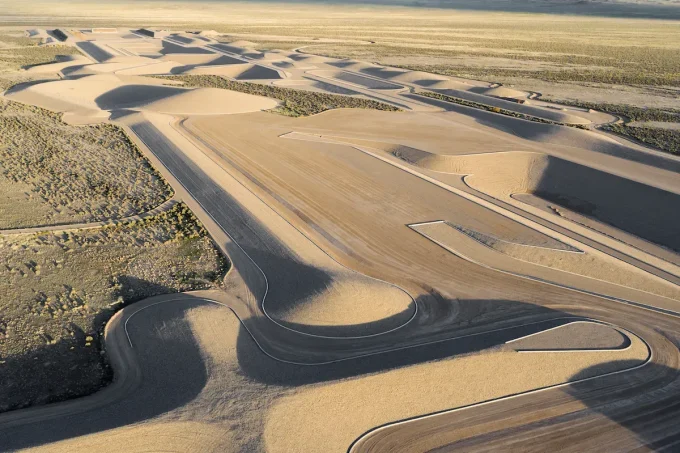






Leave a comment